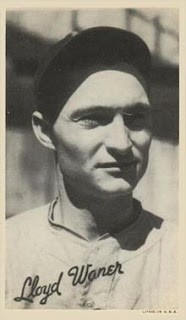"On the off chance that I was a decent catcher, it was on account of I gained from the bosses," Ray Schalk said. "I got pitchers of long experience and they pounded the amusement into me. I needed to learn or lose my occupation. They made me a star."
A catcher's quality can be gotten from significantly more than simply his offense, and there's no more noteworthy sample of this than Ray Schalk. The undersized stopping board was a workhorse for the White Sox clubs of the 1910s and 1920s, and he's viewed as the finest cautious catcher of the Dead Ball Era.
Schalk made his major association debut one day before his twentieth birthday in August 1912, then assumed control as the White Sox's ordinary catcher in 1913. Schalk's most striking hostile deed was his 30 stolen bases in 1916, setting up a record for catchers that remained until John Wathan softened it up 1982.
Where Schalk truly made his name was on barrier. Joining his sharp personality for the amusement with a manual methodology, Schalk demonstrated adroit at taking care of a wide assortment of pitching styles. A genuine workhorse, Schalk drove the American League in recreations got seven times, including his 1920 ocean child when he got 151 of Chicago's 154 diversions. His cautious ability emerges much more since he was doing it during a period when spitballs and other trap pitches were lawful. Schalk was additionally credited with getting four no-hitters in his vocation, however one of those was taken away when the models for no-hitters were balanced in 1991.
Schalk spearheaded parts of the catcher's position frequently underestimated. A dynamic part of the infield, he was accepted to be the primary catcher to move down tosses to a respectable starting point on ground outs or third base on tosses from the outfield. He additionally recorded putouts at each base throughout his profession, even a respectable halfway point, and he drove AL catchers in handling rate five times.
Schalk was an individual from the 1919 Black Sox club, which tossed the World Series against the Reds. Schalk himself was perfect, and hit .304 in the Series, however he suspected something was out of order when his pitchers kept intersection him up. Schalk dependably declined to criticize his colleagues openly. Schalk later burned through two seasons as a player-director for the White Sox in 1927-28, trailed by a long vocation training in the small time and with Purdue University.
To be a recipient Schalk was small (5 feet nine inches and 165
pounds), and his nickname "Cracker" allegedly referred to his view from
behind, which reportedly resembled a box of cookies. From any point of
view was a receiver that picked up the signs. He received 100 or more
games in nine seasons, including 11 online. He led the recipients of the
American League in fielding eight times.
In 1920 Schalk
received them four 20-game winners (Red Faber, Ed Cicotte, Lefty
Williams and Dickie Kerr), a mark matched only by Elrod Hendricks
Baltimore. Over time, Ray was the recipient of four no-hitters (Jim
Scott, Joe Benz, Cicotte and Charlie Robertson), a milestone unmatched
by anyone. The last one was a perfect game. Until his death in 1970
Schalk sent telegrams of congratulations to each recipient of a
no-hitter.
Schalk bright and ensalivadas caught balls,
balls and frosted knucklers. That gave her broken fingers many times. It
was fast enough to steal 30 bases in 1916, a record for the recipient,
Schalk was the first catcher in supporting the first and third base. He
could outs in the four bases and did it.
Ray had a strong
arm and holds the record for assists in a career of a recipient of the
American League. He had a particularly good record against Cobb.
Offensively
was not an asset. Batting average of his career was only .253, and had
no power. He lived for his glove, wit, durability and honesty. With the
White Sox, 1919, the last quality was important, to the extent that
eight of the teammates Schalk conspired to lose the World Series that
year.
Schalk was selected for the Hall of Fame in 1955.

















Follow Us